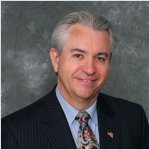John J. Graeber DMD MAGD MALD
The ADA clearly states in its Code of Ethics that in regard to patient care, a dentist must “DO NO HARM”.1 Most practitioners think of these words and feel they indicate some gross injury they might inflict on a patient. However, more often, the harm done to tooth structure is in the form of microfracturing during routine restorative procedures.
It has been well understood that the high speed handpiece causes microfractures within the tooth structure. 2 These microfractures are primarily caused by the eccentricity of rotary instruments operating within the “high speed range”. Microfractures are associated with fractured cusps and marginal ridges.
In addition, restoratives placed in teeth with microfracturing are compromised by the infiltration of bacteria through the openings into the vital dentin and contributing to microleakage and eventual restoration failure.
What are the alternatives to Rotary instruments?
Some 20 years ago, air abrasive devices similar to the system introduced by Dr. Robert Black in 1945 were reintroduced to the profession. While they cut enamel slower than high speed handpieces, they found their place in the early 1990’s due to the growth in the use of adhesive restorative materials, especially the flowable resins. Nearly 20% of the restorative dentists purchased this equipment, however, the particles of aluminum oxide were found all over the office and created a cleanliness headache.
Several years ago, a shroud of water was added to the delivery system, making powder control just as easy as with dental rotary handpieces. The addition of the water surrounds the particle stream, making it even more efficient and well tolerated by patients. The need for local anesthesia is required less than 20% of the time.
The cost of these devices has also been reduced making them even more desirable for delivering minimally invasive operative dentistry. The cost of maintenance is many times less than hard tissue lasers. Further, the dual chamber system and easy powder change mechanisms add to these units’ versatility. New powder development such as the bioglass “Sylc” can greatly enhance stain removal and polishing procedures in the hygiene room (see inset).
In the 19 years in the practice of minimally invasive techniques, I have yet to see one single cuspal fracture in tooth exclusively prepared with air abrasion.
Fluid air-abrasion is here to stay! I have used the Velopex Aquacut for the past 5 years, and I know of no better value in performing minimally invasive preparations of every type when compared to much more expensive hard-tissue lasers.
The cost is minimal; every cavity preparation can be performed along with sealant and bonding preparation and cleaning indirect restoratives for cementation. The mess is gone; no vibrations, no noise, stronger bonding strengths, no patient complaints, and no harm!
References
1. Code of Ethics, American Dental Association, 1998
2. Xu, HHK; Kelly,JR; Jahanmir, S; Thompson, VP; Rekow, ED, Enamel Subsurface Damage Due to Tooth Preparation with Diamonds. J. Dent. Research, 76(10): 1698-1706, October, 1997
Sylc Powder
As a Dental hygienist in a very progressive practice, I have found that Sylc Powder in my Aquacut is superior in patient comfort, with much less splatter than sodium bicarbonate. The patients are surprised at the lack of sensitivity. As for efficiency, Sylc removes stains, cleans the surface quickly and thoroughly leaving a much smoother surface which resists plaque buildup. It is by far the best abrasive system I have used in my 20 year career.
Trish Cappiello, RDH







